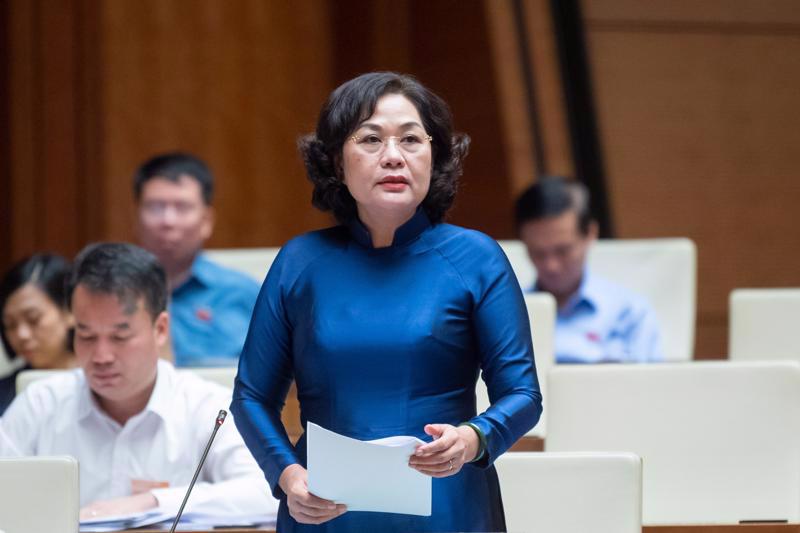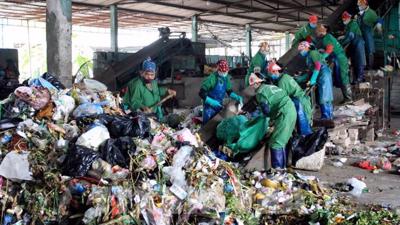Monetary policy to be adaptive
Ms. Nguyen Thi Hong, Governor of the State Bank of Vietnam, tells Vietnam Economic Times / VnEconomy’s Phan Linh about the need for adaptive monetary policies to meet the government’s 2025 targets of 8 per cent GDP growth and inflation of below 4.5 per cent amid global uncertainties and trade tensions.

How will monetary policy be affected by the complex global and domestic landscape forecast for 2025?
Analysts anticipate significant challenges in 2025 as the global economy remains uncertain and fraught with risk. While global inflation is declining, its stability remains uncertain, with potential upwards pressure, particularly given Vietnam’s high degree of economic openness. Commodity prices are expected to fluctuate due to geopolitical tensions, rising food security concerns, and the impact of natural disasters and extreme weather events.
In this context, international organizations such as the International Monetary Fund (IMF), the World Bank (WB), and the ASEAN+3 Macroeconomic Research Office (AMRO) have noted Vietnam’s limited room for further monetary easing and recommend leveraging its available fiscal space to support growth.
For the State Bank of Vietnam (SBV), past successes in monetary policy, particularly in inflation control, have bolstered its credibility and anchored inflation expectations. However, inflation risks in 2025 cannot be underestimated, especially amid persistent global and domestic uncertainties. Underestimating these risks and reacting too slowly with monetary policy could have negative repercussions for economic activity.
To achieve the socio-economic development goals set by the National Assembly (NA) and the government for 2025, a well-coordinated approach is essential, harmonizing monetary policy, fiscal policy, and other macro-economic strategies to ensure sustainable growth while maintaining key economic balances.
What are the SBV’s key policy objectives for 2025?
Given the current outlook, the SBV’s monetary policy management in 2025 will focus on several core measures.
First, it will focus on closely monitoring global and domestic economic developments to implement a proactive, flexible, and effective monetary policy. This will involve coordinating closely with fiscal policy to support economic growth, promote business activities, and maintain macro-economic stability while keeping inflation under control.
Second, monetary policy tools will be managed flexibly in response to macro-economic trends, ensuring financial market stability and providing liquidity support to credit institutions when necessary. Interest rates and exchange rates will be adjusted in alignment with macro-economic balances, inflation control, and overall monetary policy objectives.
Third, credit policies will be designed to align with macro-economic and inflationary conditions, ensuring an adequate supply of credit to meet the capital needs of the economy while maintaining financial stability.
The government has set a GDP growth target of 8 per cent in 2025 as a foundation for double-digit growth in subsequent years. Given the economy’s heavy reliance on credit, what are your thoughts on credit allocation this year?
Vietnam’s credit-to-GDP ratio is among the highest globally and has drawn warnings from the WB. International organizations such as the IMF, the WB, and AMRO have pointed out that Vietnam has limited room for further monetary policy easing and have recommended leveraging its available fiscal space to support growth.
In this context, the SBV will guide credit institutions to ensure safe and efficient credit growth, directing capital flows towards production, business activities, and priority sectors. At the same time, it will implement targeted credit programs and policies for specific industries and sectors in line with the directives of the government and the Prime Minister. Notably, it will strictly control credit in high-risk areas while facilitating access to bank credit for individuals and businesses, thereby effectively fulfilling its mandate assigned by the Party and the government.
During the Q&A session before the NA in November 2024, you mentioned that the economy’s high level of risk is putting pressure on non-performing loans (NPLs) in credit institutions, making it difficult to reduce lending rates. What is your forecast for risk levels in 2025?
NPLs in the credit institution system arise from various factors.
First, the domestic economy has been affected by negative global developments, and production industries in general are still facing many difficulties.
Second, while the stock and bond markets show signs of improvement, their recovery has been slow. The real estate market, after a period of rapid growth, has revealed existing problems and latent risks.
Third, the legal system still exhibits shortcomings, especially in land management, bankruptcy, corporate dissolution, civil enforcement, and law enforcement mechanisms. There are also insufficient mechanisms and policies to incentivize domestic and foreign investors to participate in asset resolution and NPL sales. The NPL market has not developed as expected.
Fourth, borrowers may have poor financial health or be experiencing business losses, using loan funds for improper purposes and inefficient investments, leading to an inability to repay debts to credit institutions.
Fifth, some institutions still face management shortcomings in relation to the scale, credit growth speed, and risk levels. The quality of credit approval and appraisal processes has been inadequate.
In light of these realities, the SBV has instructed entities within the system to strictly implement directives regarding monetary and credit activities, as well as credit regulations, to improve business performance, ensure system safety, and stabilize the money market.
At the same time, we consistently require that credit institutions ensure safe, effective, and healthy credit growth, limiting the increase and emergence of NPLs and ensuring operational safety. We also direct credit towards production sectors, priority areas, and sectors that drive economic growth while tightly controlling high-risk areas.
With the new provisions in the Law on Credit Institutions 2024, it is expected that the handling of non-performing loans will become more efficient and effective in the near future. Additionally, the State Bank of Vietnam will continue to implement credit solutions that are in line with macro-economic developments, inflation, and the credit capital needs of the economy. It will direct credit institutions to grow credit safely and effectively, channel credit into production and business sectors and priority areas, and implement specific credit programs and policies for certain industries and sectors according to guidelines from the government and the Prime Minister. It will also strictly control credit in high-risk sectors and create favorable conditions for people and businesses to access bank credit.







![[Interactive]: Economic overview - April 2025](https://media.vneconomy.vn/400x225/images/upload/2025/05/06/5a245778-67b1-4874-a8dc-21f8cfed62a6.png)